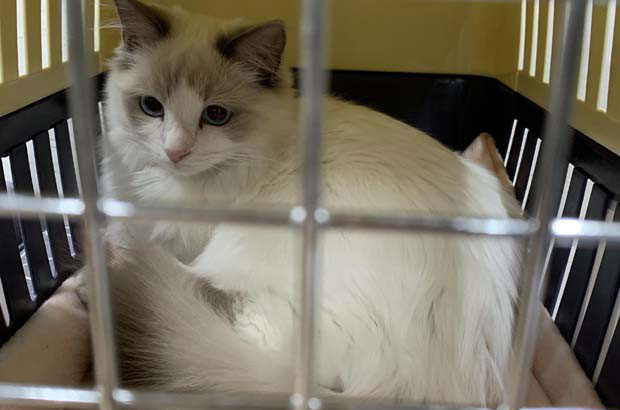Ragdoll Cat: The “Little Fairy” in the Cat World (1)
If there is a kind of cat that often makes people sigh how such a perfect little life can exist in the world, I think it must be the Ragdoll Cat. Yes, the Ragdoll Cat is one of the largest, heaviest and most beautiful purebred cats in existence. It has medium-length silky hair and shiny almond-shaped blue eyes. With a long feather-like tail, it is often called a “walking plush toy” by cat lovers, attracting a large number of serious cat addicts. Today, let’s talk about this “little fairy” in the cat world!
1. History is the basis for understanding Ragdoll Cats
Ragdoll Cats were bred by Ann Baker in the 1960s. She was a breeder in California, USA. At that time, she borrowed her neighbor’s cat Pennels and mated it with her own cat Josephine (a white long-haired cat) to get Josephine’s four kittens. These four kittens are the transitional Ragdoll Cats, and they are also the basis for the establishment of today’s Ragdoll breed. Later, in 1996, Anbeco registered two of the four cats with the Cat Fanciers Association (CFA) and named them Ragdoll (Chinese name: Ragdoll cat).
2.
The distribution have a wedge-shaped head, large and round eyes, thick fur, long and fleshy limbs, a long tail, and a soft body. As a late-maturing breed, their fur color will not be full enough until at least 2 years old. Newborn kittens are all white. After a week, the face, ears, and tail of the kittens begin to change color. The fur will not stabilize until the age of 2, and will not be fully grown until 3-4 years old.

There are four main patterns of grown-up ragdoll cats: bicolor, van color, glove, and key. The pattern has six colors: seal, blue, chocolate, lavender, red, and cream. The markings can be lynx, tortoise shell, and lynx tortoise shell. If you do the math, you might find that there are a lot of different combinations!
Below, we’ll introduce the patterns, colors, and markings of Ragdoll cats.
First, the pattern classification: Currently, people mainly divide Ragdoll cats into four categories based on the number of white spots.
1. Two-color pattern
The face is inverted “V” shaped, the limbs, chest and abdomen are white; the rest of the body is a gradient key color.
2. Glove pattern
The chin, paws, chest and abdomen are white; the rest of the body is a gradient key color. It’s called a glove because the paws are white, as if wearing a pair of white gloves.
3. Key pattern
The face, limbs, and tail are gradually changing from dark to light with the key color on the torso.
4. Van color (high white two-color) pattern
The top of the mask, ears, and tail are gradient key colors, and the rest of the body is white.
However, some breeders later discovered that in addition to these four patterns, there are some other pattern types.
One is the high white glove color: It is similar to the two-color overall, especially the face. But sometimes there are color blocks on the legs. The saddle-shaped color block on the back may be slightly different from the two-color.
The second is the medium-high white bicolor: the V-shaped white spots on the face are wider than the bicolor, and its edge usually passes through the eyes. The number of white spots on its body is usually not stable.
Leave a Reply